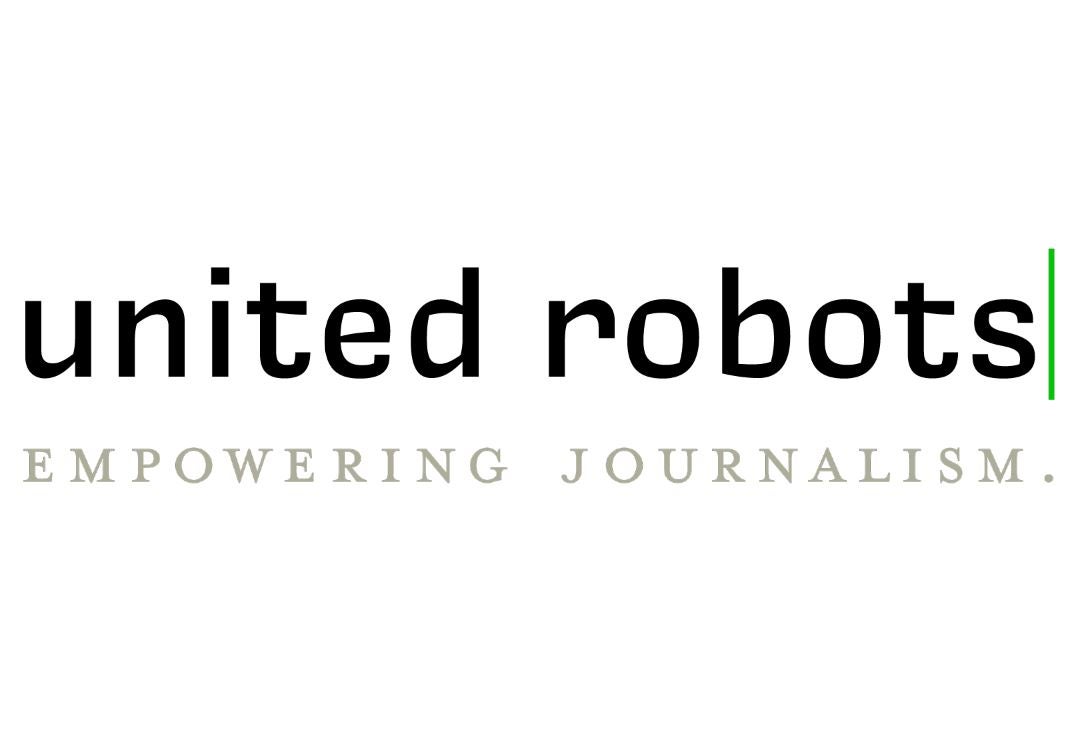It is an old business maxim: success breeds success. Corporate cliché or not, for Bergens Tidende (BT), two golds at this year’s years INMA Global Media Awards was affirmation of this.
Prizes for Best Subscription Niche Product and Best New Digital Product were recognition of the Norwegian publisher’s achievement in hugely growing its local business coverage. It was a process made easier, however, by the success BT had previously enjoyed leveraging automated editorial content.
At a time of increasingly squeezed budgets and overworked journalists, local business journalism – once the backbone of many regional publishers – has long been on the wane. The man hours and journalistic commitment required to wade through annual reports and local listings means that generating a fully rounded picture of what’s happening in the local economy is beyond the means of most newsrooms.
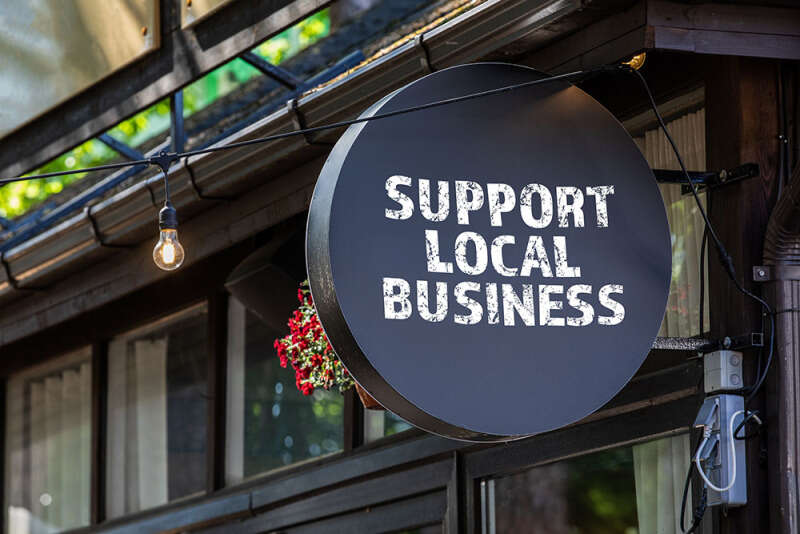
Jan Stian Vold remembers the halcyon days of local business coverage well – and it was recognition of the value of trying to recapture them that led the BT project lead and his team to investigate the potential of a Local Business Robot from United Robots. Having already enjoyed great success working the Swedish tech company on integrating and training a real estate bot – a project that now generates some 12,000 automated articles annually and has thus far sold more than 1,500 subscriptions – the business case was easy to make.
“You used to have a whole newsroom of journalists covering local business life,” Vold recalls fondly. “They read the reports, broke down the numbers, and spotted the stories. It is a function that has generally been lost due to necessary prioritisations over the years – but it is a function we wanted to replicate.”
But this is not rooted in some romantic notion of recapturing the past. The decision is driven by cold hard data – both availability of the type that enables these stories to be generated, and the numbers telling Vold and his team that significant demand existed for content focused on the local business community.
A growth market
About 10,000 BT readers now access automated business content daily – and the local business bot stories regularly sit towards the top of BT’s “most read” list. At the time of Press Gazette’s conversation with Vold, the second biggest story on the site focuses on a local toy store. “It’s actually been quite crazy,” he says of the level of engagement.
What’s more, this appetite is only growing. At a time of global uncertainty, macro events are often most keenly felt and played out at a local level. “It can seem we are lurching form one crisis to another,” Vold says. “It means you have a particularly high number of economic stories of high newsworthiness. The bot both provides a tool to identify those stories and enables journalists to go and investigate them. The timing feels very good.”
The business bot launched in summer of last year, covering the results of Bergen companies with a turnover of at least €300,000. It transforms annual reports into quick summaries of revenue, profit and profit before tax, as well as providing information around aspects such as employee numbers, CEO salary and dividends. The public availability of this data in Norway provides the potential for creating information-rich, consistent content, but it also means that the scale of what is created can be daunting. In this sense, Vold is insistent that – unlike real estate – manual intervention and human collaboration is required to both identify what is newsworthy and maximise editorial impact.
“We can get hold of a lot of high-quality, structured data, but you have to prioritise,” he explains. “Local media houses used to commit more resources to business reporting, but they couldn’t cover every business on every street. We potentially can cover the whole ground, but not all stories are of equal significance. In order for stories to make it to the front page, its newsworthiness has to be assessed – are these businesses people are interested in? Combining this technology with human resources is how you see even better results.”
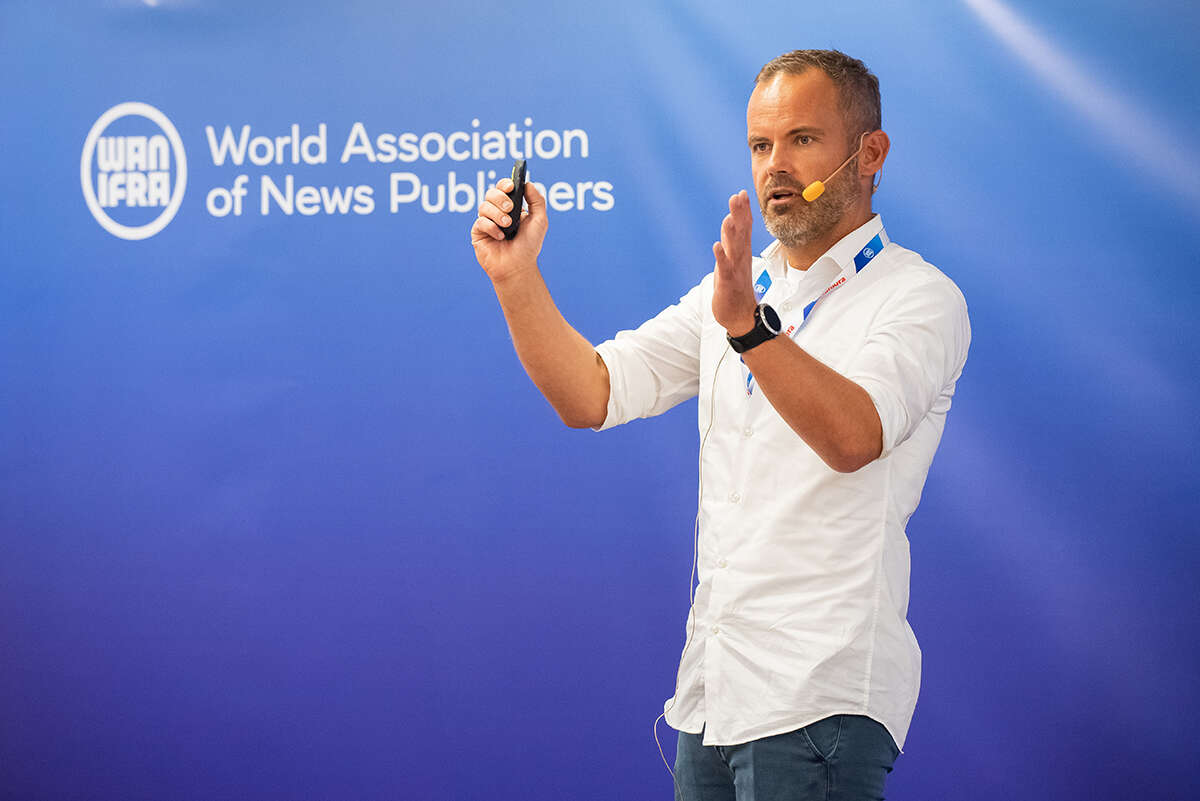
That combination of human and robot is also reflected through stories and reports the editorial team has been able to create when data is filtered and aggregated. Vold points to how the robot was able to provide an early indication of the city’s hotel industry’s recovery in the wake of Covid – a story which, once investigated by human journalists, was found to be down to a significant uptick in domestic tourism. He also cites a report on the dearth of female leadership among Bergen’s 500 highest-earning companies, a report which generated significant attention and further news stories.
The pulse of a city
For United Robots’ head of customer success, Caroline Briggs, the levels of engagement BT has witnessed reflects a wider appetite from readers for local business content – and the opportunity to serve incredibly specific readership categories can be a huge engagement driver. “We are seeing a trend where publishers are looking to become ever more local, branching out to create hyper-local news stories for their smaller communities. A local business bot can really help them in this regard, providing content around the pizzeria down on the corner, or the grocery store down the street. There is high interest for those texts, but not traditionally the resources to serve them.”
Empowering a community and its members to feel seen is the invaluable service that local media provides. Vold says he has noticed a marked change among both citizens and local business leaders since BT began to scale up hyperlocal coverage.
“There is a sense that we are much more closely related to our readers’ daily lives,” he says. “We are covering the shops, restaurants and services that they regularly interact with. When a shop owner’s annual report is ready, they now know we will write about their company. The real estate bot had a similar impact: when they sell their house, it will be covered. Suddenly, we are much closer to those readers.”
Unlike real estate, however, Vold claims he had no idea that covering local business in this way would have such a big impact so quickly. While success with property reporting had convinced him and the team of the potential for introducing a further bot with real value for readers, he did not expect appetite for the information produced to be on this scale.
“I saw this as more of a niche product, for the hardcore readers of business news,” he says. “Engagement has been so much broader than that. Again, that has to do with how it really enables us to get so close to the pulse of the city – something I don’t think even we were aware of when we started out. I wouldn’t have dared dream of these numbers.”
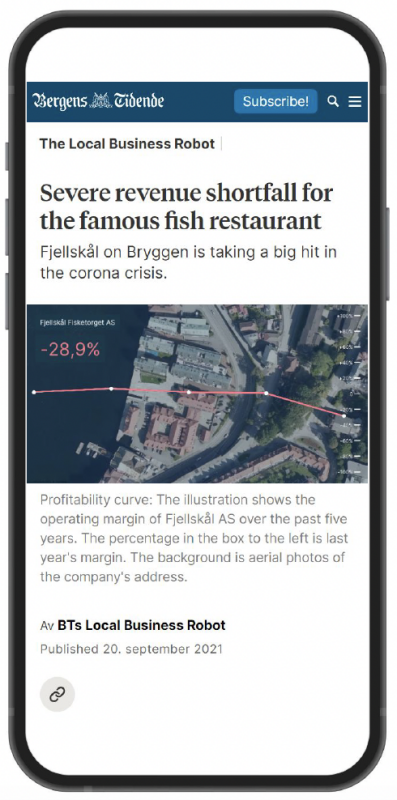
Building on strong foundations
The speed with which Vold and his team were able to make that discovery was greatly accelerated by the fact it built on an existing relationship with United Robots. “Working from a foundation of existing knowledge was invaluable,” he says. “The technology behind it wasn’t so frighteningly new. I’m quite proud that from the first conversations internally to the first article was just four months.”
Of course, not all newsrooms looking to expand local business coverage will have that experience of automation. Coming to this new, however, should not put publishers off investigating its possibilities. Briggs suggests that one should worry less about the technology itself, and more about precisely what it is you want automation to achieve.
“It starts with a discussion of scope,” she says. “What areas do you want to include and what size of company? That provides us with an idea of how many texts will be generated across the year and we can adjust limits to include fewer or more companies. Within a week we are ready to start delivering texts to Slack and, once that is set up, straight to the CMS. We then invite reporters to a best practice session where we show examples of how to maximise the benefits of these texts. When the reporters engage and enhance some of the more interesting articles, we see amazing results.”
These tweaks include identifying what to promote on the front page, optimising headlines, and adding links to relevant previous stories. “The robot has already done the hard work, analysing data, identifying angles, and enriching the text with charts,” Briggs explains. “In just a few minutes you can turn that into something that can outperform many other articles on the main page.”
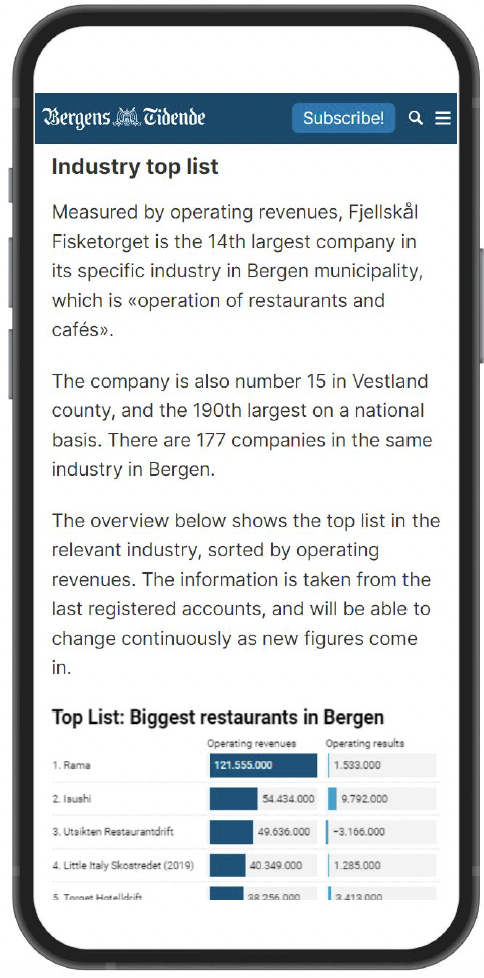
A Swedish version of the bot was launched in Q1 of this year and is already live across 13 news sites.
This can be a significant driver of subscriptions, the customer success manager continues, as well as generating new advertising revenue streams. Vold embarked upon automated real estate content as a way of building BT’s subscriber base, but his attitude towards this business content is somewhat different.
Further investments
“New subscriptions are still significant, but I would say the most important aspect is keeping our existing subscribers happy – reducing churn and growing retention,” he explains. “We now have over 100 stories this year which have been read by over 10,000 people [BT had 65,000 active digital subscribers at the beginning of 2022]. It is clear how much value this has brought to our readership.”
Vold and the team are clearly not done with robot content. A third bot has already been launched covering the local holiday property market, and the potential for introducing sports coverage is also being explored. Equally exciting for the project director, however, is the opportunity to further tweak, train and enhance existing capabilities in order to create ever richer stories that reflect and reveal the city BT serves.
“An area I’m really focused on right now is looking beyond single companies and into industries as a whole on a local level in a much more detailed manner,” Vold reveals. “That will help us contextualise these stories in a rich way and add real editorial value. It should never be about introducing a bot and leaving it to produce thousands of stories without guidance. Like with human journalists, you need to be committed to constantly improving on what has come before.”
Email pged@pressgazette.co.uk to point out mistakes, provide story tips or send in a letter for publication on our "Letters Page" blog

